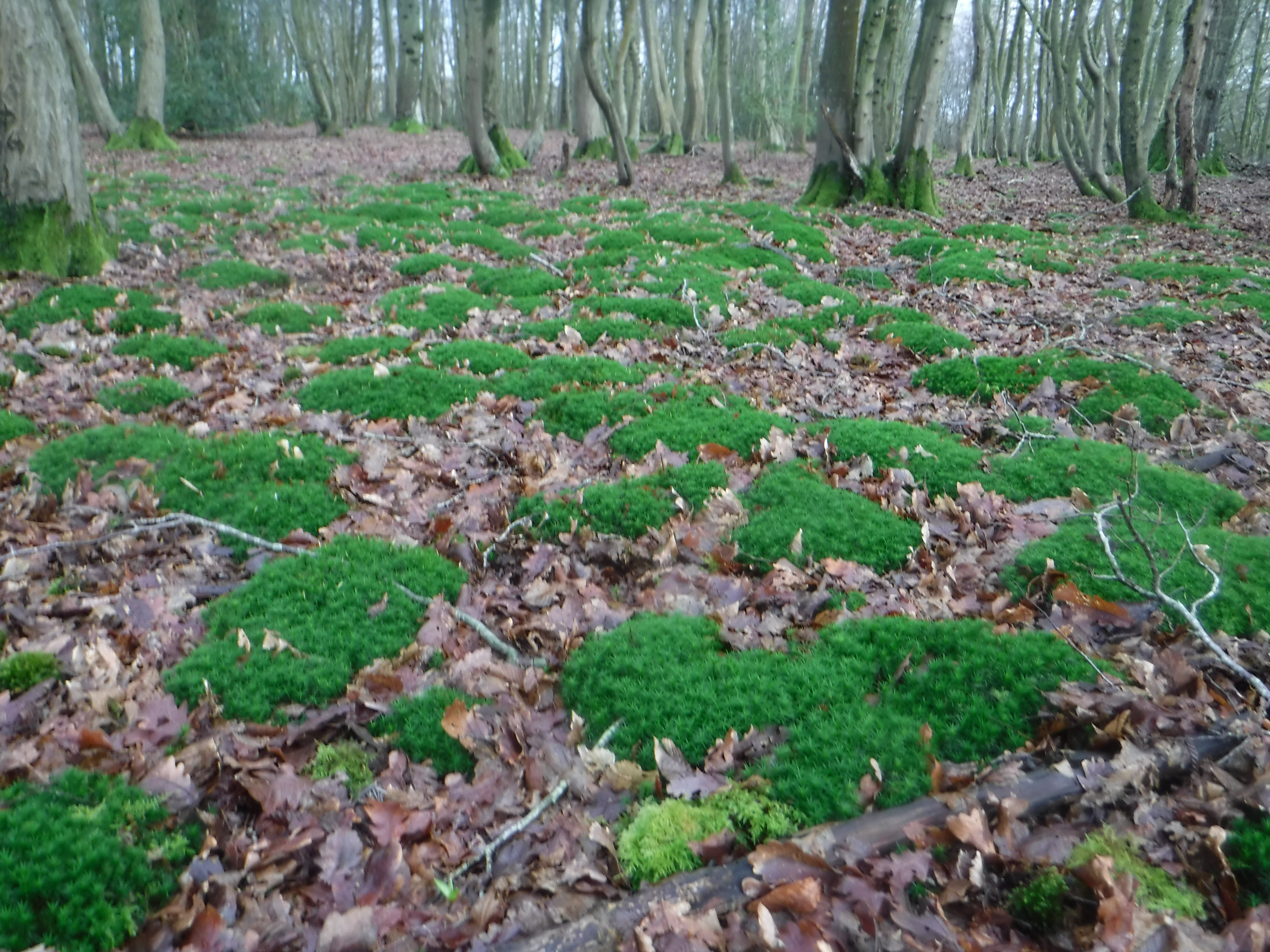
Total monthly rainfall: 54.5 millimetres. Maximum daily rainfall: 13 millimetres (7th February).
This fell as snow between the 7th and 10th, and there was 100% cloud cover for 17 days for at least part of each day.
Maximum temperature on the warmest days was 15°C on the 23rd,24th, and 25th. Maximum temperature on the coldest days was 0°C on the 8th,9th,10th, 11th, 12th, and 13th with overnight frost from the 7th to 14th when all ponds were partly or wholly frozen.
Only two wildflower species came into bloom during the month: dog’s mercury on the 22nd and lesser celandine on the 23rd. This brings our monthly total so far to 12 flowering species.
Once again, no species of butterfly appeared during the month. However, on the 20th we saw 3 brindled pug moths flying close together above brambles in the wood, and on the 24th we found a spring usher moth which we disturbed from the woodland floor.
-
 5th Feb - Moss patches in wood
5th Feb - Moss patches in wood
5th Feb - Moss patches in wood
5th Feb - Moss patches in wood
-
 8th Feb - Red oak in snow
8th Feb - Red oak in snow
8th Feb - Red oak in snow
8th Feb - Red oak in snow
-
 24th Feb - Lesser celandine
24th Feb - Lesser celandine
24th Feb - Lesser celandine
24th Feb - Lesser celandine
https://www.kentfieldclub.org.uk/news/little-barton-farm-wildlife-notes/nature-notes-february-2021#sigProId6bdd58c411
Other insects to appear were a buff-tailed bumblebee in the garden on garrya (February 21st), and several honey bees on evergreen viburnum (26th). We also found a solitary bee crawling on the floor indoors the same evening, and this we identified as a wool carder bee.
There were two new wild bird species to arrive this month – both seen in the wood. A pheasant was flushed out in the wood on February 5th, and a song thrush appeared there on the 8th. The 5th also produced a fine display of mosses on the woodland floor, and the 8th a coating of snow round the red oak in our hedgerow.
The spell of freezing weather as we approached mid-month led to many hazel catkins turning brown on the 13th. However, the few which survived by the 15th released pollen, which should allow them to produce a small crop of nuts later in the year. On the 25th, elder buds on the shrubs in our garden hedge began to open.

